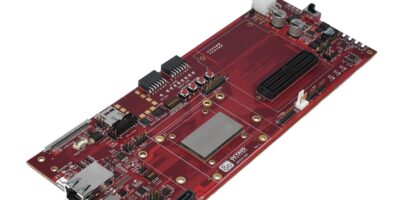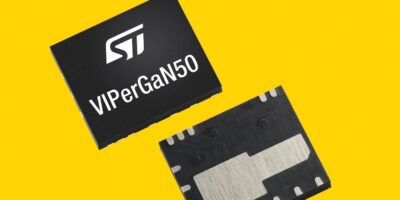The OSDZU3 family of SiP devices by Octavo Systems uses the AMD Xilinx Zynq UltraScale+ MPSoC architecture.
SiP is based on the AMD-Xilinx Zynq UltraScale+ MPSoC ZU3 and integrates LPDDR4, EEPROM, QSPI, MEMS oscillators and more than 100 passive components in a single BGA measuring 20.5 x 40mm.
According to Octavo, the OSDZU3 is about 60 per cent smaller than an equivalent system design with discrete components. As well as addressing SWaP (size, weight and power) of a product, the SiP removes the need to design complicated power systems of DDR, saving customers up to nine months in design time, said Greg Sheridan, vice president of strategy and marketing at Octavo Systems.
The OSDZU3 provides access to all the interfaces and features on the AMD-Xilinx ZU3. The 1mm pitch, 600 pin ball map provides access to every I/O on the ZU3 in just two PCB layers using low-cost design rules. The power system also allows the designer to leverage all the power modes the ZU3 supports.
“System-level solutions are increasingly important to our customers, as they seek to deploy cutting-edge embedded computing and machine learning capabilities within increasingly compressed development timeframes,” said Hanneke Krekels, vice president of Core Vertical Markets, Adaptive & Embedded Computing Group, AMD. “In-line with these objectives, we have worked closely with Octavo Systems to bring the first System-in-Package solution based on the powerful Zynq UltraScale+ MPSoC. This offering enables our users to accelerate innovation and simplify system design for the most size constrained applications.”
The OSDZU3 is compatible with the AMD-Xilinx development tools, Xilinx Vivado Design Suite and Xilinx Vitis unified software platform.
Octavo Systems worked closely with DesignLinx, an AMD-Xilinx Premier Design Service partner, to develop the base software platform needed to ensure the SiP integrates into the standard AMD-Xilinx tool flow.
To accompany the OSDZU3 SiP, Octavo Systems will be releasing the OSDZU3-REF reference platform. It features popular interfaces like USB-C, USB 3.0, SATA Host, 1Gb Ethernet, and an FMC LP Connector. It also supports displays through Display Port and a LVDS touch display connector. It will ship with a PetaLinux Distribution and demos that are also developed by DesignLinx.
Octavo Systems has also franchised Avnet as a global distributor for the OSDZU3 SiP. Engineering samples are available today through the beta program. Design engineers who are interested in gaining access to the beta program can contact their local Avnet, Octavo Systems, or AMD-Xilinx sales representative.
The reference platform will be available to the general market in Q3 and the OSDZU3 will be in production by the end of the year.







